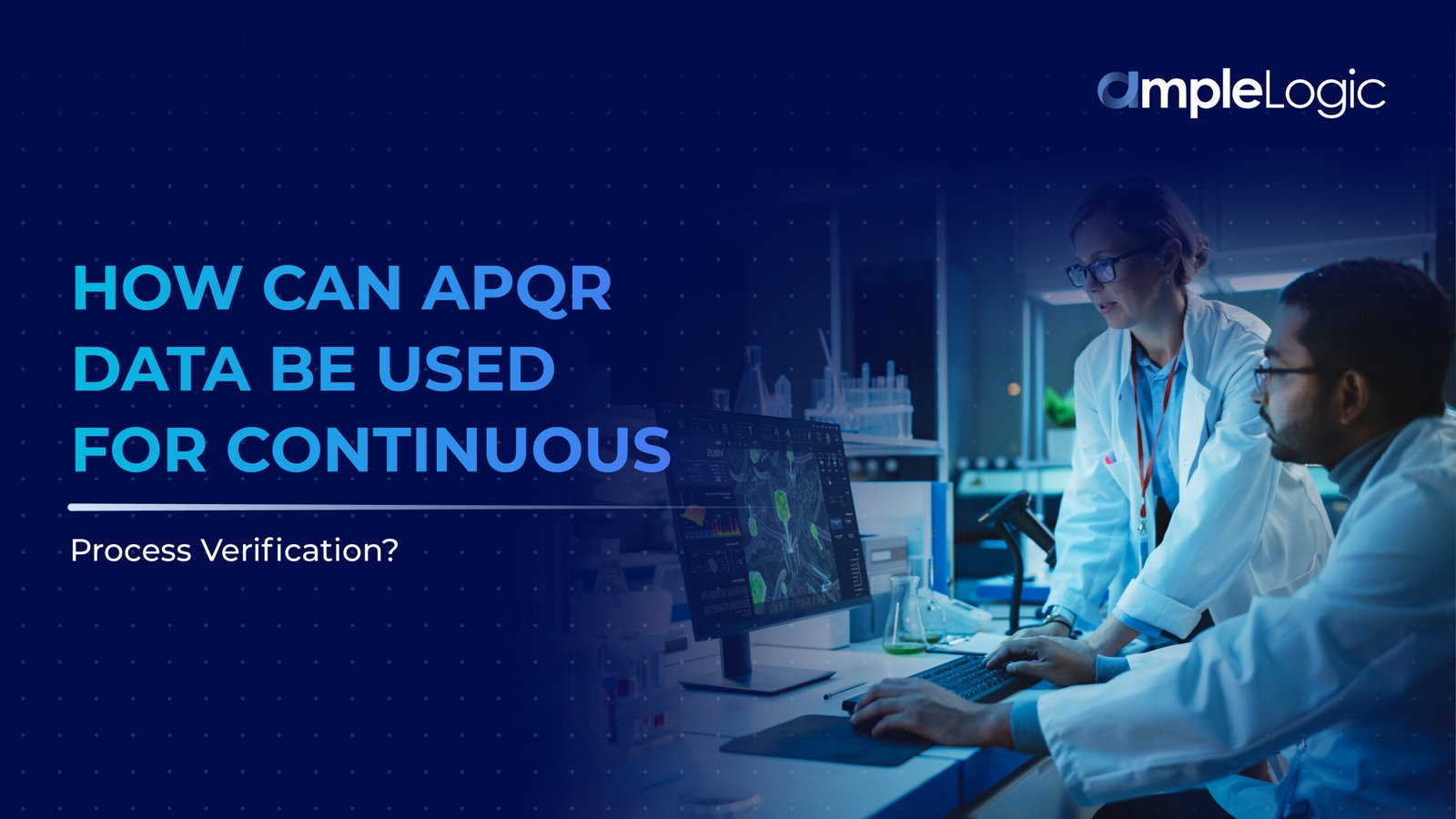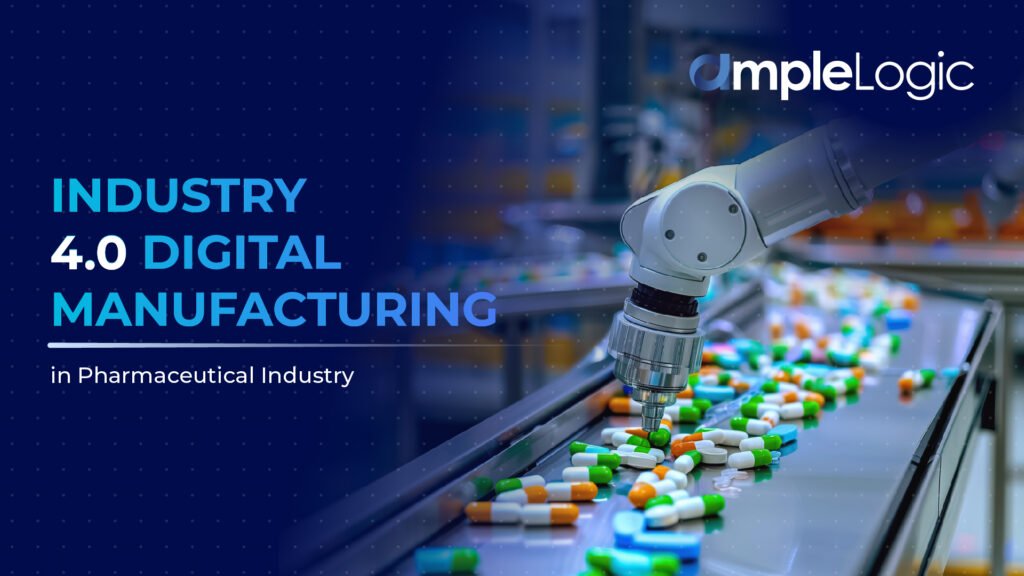
Maintaining constant product quality is of extreme importance in the pharmaceutical sector. A thorough assessment of a product’s quality over the course of the year is provided by the Annual Product Quality Review (APQR), which also helps to identify areas for improvement and ensure that regulatory standards are being followed. When appropriately used, APQR data plays a significant part in Continuous Process Verification (CPV), a proactive strategy that stresses constant manufacturing process monitoring and control in order to guarantee continuous product quality.
Pharmaceutical manufacturers can use APQR data to improve process understanding, optimize operations, and guarantee compliance with strict regulatory requirements. This blog examines the synergy between APQR and CPV.
What is APQR?
The Annual Product Quality Review (APQR) is a systematic review of product quality data over a defined period, typically annually. It evaluates process consistency, deviations, change controls, stability data, and other elements critical to ensuring that manufacturing processes remain in control. While guaranteeing adherence to regulatory standards such as FDA and EMA guidelines, APQR promotes continuous improvement by spotting trends and areas for improvement.
Components of APQR include:
- Process consistency: Verifying that processes operate within predefined parameters.
- Deviation management: Identifying Out-of-Specification (OOS) or Out-of-Trend (OOT) results for timely corrective actions.
- Change control: Assessing the impact of changes on product quality.
- Stability data: Monitoring product performance over time to ensure shelf-life compliance.
Also Read – 7 Challenges in Conducting APQR and How to Overcome Them
What is CPV?
Continuous Process Verification (CPV) is an extension of traditional process validation that focuses on ongoing monitoring of critical process parameters (CPPs) and critical quality attributes (CQAs) during routine production. Unlike periodic assessments, CPV emphasizes real-time data collection and analysis to detect trends or deviations promptly. This proactive approach ensures that manufacturing processes consistently deliver products that meet predefined quality standards.
You can get Amplelogic’s CPV solution here – Book your Free DEMO today!
Integrating APQR Data into CPV
A solid framework for improving process understanding and control is provided by the incorporation of APQR data into CPV. Here’s how APQR data can be effectively utilized in CPV:
- Trend Analysis and Process Monitoring
APQR provides historical data that can be analyzed to identify trends, patterns, and variations in process performance. By examining this data:
- Manufacturers can establish baseline metrics for CPPs and CQAs.
- These baselines serve as reference points in CPV to detect shifts or drifts in process behavior.
- Continuous monitoring against these baselines enables early identification of potential issues.
For example, AmpleLogic’s APQR software uses advanced tools like Nelson’s Rule to detect non-random conditions in processes. This ensures timely interventions to maintain process control.
- Risk Assessment and Management
APQR data aids in comprehensive risk assessments by highlighting vulnerabilities in manufacturing processes. Understanding these risks allows manufacturers to:
- Prioritize monitoring efforts in high-risk areas during CPV.
- Allocate resources efficiently to address potential issues before they escalate.
AmpleLogic’s APQR software simplifies risk assessment by capturing critical process parameters (CPPs) and generating real-time CPV reports. These reports help manufacturers focus on areas requiring immediate attention.
Must Read – Exploring the 3 W’s of APQR: What, Why, and Where
- Enhancing Real-Time Release Testing (RTRT)
Incorporating APQR insights into CPV supports the implementation of Real-Time Release Testing (RTRT). RTRT evaluates the quality of in-process materials and final products based on real-time process data rather than end-product testing alone.
Benefits include:
- Faster product release by reducing reliance on post-production testing.
- Improved decision-making through real-time data analysis.
- Accelerated time-to-market for pharmaceutical products.
AmpleLogic’s integrated CPV features enable RTRT by providing real-time insights into CPPs and CQAs, ensuring consistent product quality throughout production.
- Continuous Improvement and Process Optimization
The iterative analysis of APQR data within the CPV framework fosters a culture of continuous improvement by:
- Regularly reviewing process performance data to identify optimization opportunities.
- Implementing changes based on insights derived from historical trends.
- Monitoring the effects of these changes in real time.
AmpleLogic’s APQR software generates comparison reports – before and after implementing Corrective and Preventive Actions (CAPA) – to evaluate the impact of changes on process performance.
- Regulatory Compliance and Documentation
Regulatory agencies emphasize continuous oversight as part of a comprehensive quality management system. Utilizing APQR data in CPV demonstrates:
- Commitment to ongoing process validation.
- Transparent documentation for regulatory inspections.
AmpleLogic’s solutions ensure compliance by automating documentation processes, enabling pharmaceutical companies to provide evidence of consistent product quality during audits.
Implementing APQR-Driven CPV: Best Practices
To effectively integrate APQR data into CPV, manufacturers should adopt the following best practices:
- Robust Data Collection Systems
Implement advanced systems capable of capturing accurate real-time process data. - Advanced Analytical Tools
Use statistical process control (SPC) software and multivariate analysis techniques to detect deviations and identify trends indicative of variability. - Cross-Functional Collaboration
Assure collaboration between Quality Assurance, Manufacturing, and Data Analytics teams for a holistic approach to monitoring. - Training Programs
Cultivate a culture of continuous improvement by equipping personnel with the necessary skills to implement CPV effectively.
AmpleLogic’s APQR software incorporates these best practices by offering automated tools for seamless integration between departments, ensuring efficient decision-making and proactive risk management.
Also Read – Mastering Pharmaceutical Quality with Integration of Process Capability and APQR
AmpleLogic’s Role in Integrating APQR with CPV
AmpleLogic has revolutionized pharmaceutical manufacturing with its cutting-edge APQR software designed to support Continuous Process Verification. Key features include:
- Real-Time Data Monitoring: Capture CPPs across multiple batches for generating effective CPV reports.
- Process Capability Index (CPK) Assessment: Evaluate processes using CPK values:
- CPK < 1: Not satisfactory
- 1 ≤ CPK ≤ 1.33: Satisfactory
- CPK > 1.33: Highly satisfactory
- Comparison Reports: Assess the impact of CAPA implementation or vendor changes on process performance.
- Nelson’s Rule Integration: Detect non-random conditions for timely corrective actions.
- RTRT Enablement: Facilitate faster product release through real-time evaluations.
By integrating these capabilities into their operations, pharmaceutical companies can achieve consistent product quality while adhering to regulatory requirements.
Conclusion
At the heart of pharmaceutical manufacturing lies a shared mission: delivering safe, high-quality products that improve lives. By leveraging the power of APQR and CPV, manufacturers can move beyond traditional methods and embrace a future defined by precision, agility, and continuous improvement. AmpleLogic is proud to stand as a trusted partner in this transformation. Our advanced solutions are designed to simplify complexity, empower decision-making, and ensure regulatory excellence. Together, we can redefine what’s possible in pharmaceutical manufacturing.
Ready to take the next step? Let’s collaborate to build smarter, more efficient processes that drive success. Contact us today to explore how AmpleLogic can support your journey. Also, you can visit our page for other such informative articles – AmpleLogic Resources!





























